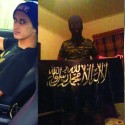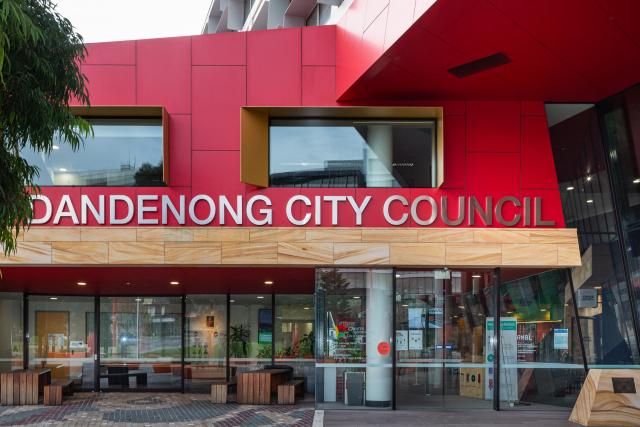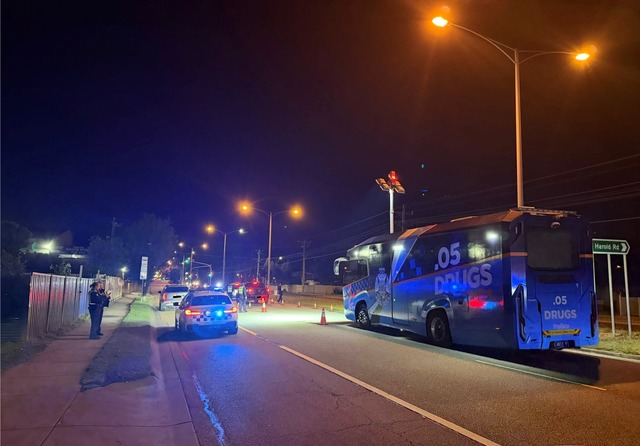By CAM LUCADOU-WELLS
THE police officer who shot dead terror suspect Numan Haider has told a coronial inquest that the Australian Secret Intelligence Organisation (ASIO) withheld vital intelligence beforehand.
The Victoria Police detective, who cannot be identified, had agreed to meet Haider outside Endeavour Hills police station after the teen terror suspect called him back earlier that evening of 23 September 2014.
In one of four calls that evening played to the Coroner’s Court on Friday 18 March, background whispering can be heard from Haider’s end.
As the teen terror suspect waited for a police detective to pick up his call, he can be heard talking about something hidden inside a pocket.
On the recording, Haider talked at length. He referred to something just looking like “s*** in a pocket”.
“I don’t trust them,” he said.
The phone recording was played to a coronial inquest into Haider’s death at the County Court.
When Officer A picked up the call, Haider can be heard asking him if he had searched Haider’s house in Endeavour Hills that night.
“That’s right,” Officer A said.
Unbeknown to the officer, Haider had been upset that police – or “dogs” as he described them – searched his bedroom in his absence that evening.
“I don’t think I can come down to the police station. I feel comfortable here,” Haider told the officer on the phone.
Haider said he wanted to meet at Hungry Jack’s in Hallam.
Background whispering can be heard from Haider’s end, something that Officer A later agreed with the court that he found concerning.
Officer A told Haider that there would be too many people in Hungry Jack’s for them to be able to talk freely but that in reality “I was thinking this was some sort of ambush or a trap”.
He said he needed to make an assessment for Australia’s national security but that Haider wouldn’t be arrested or detained.
The detective told Coroner John Olle that he was also not privy to Haider’s utterances prior to the officer picking up the phone.
Officer A told the court that he had asked Haider to come down to Endeavour Hills police station “just for a chat” and that had he declined to meet then no further contact would have been made.
But Haider called back a second time to say that he would come down to the police station.
“Beautiful,” Officer A responded on the tape.
There was at least five seconds of silence on the tape when Haider apologises for putting the officer on mute.
“Can we talk outside or something?” Haider asked.
“Yeah, no dramas. I’ll wait for you,” the officer said and asked what car Haider would be driving.
They agree to meet in 15 minutes.
Counsel assisting, Rachel Ellyard, asked the officer in court why he agreed to the meeting “very speedily”.
“I was very happy that Numan was coming down to the station to meet me and talk to investigators,” Officer A told the court.
Police planned to wait outside for Haider. After searching Haider for weapons, Officer A planned to then persuade the 18-year-old to come inside the station.
However Haider called 10 minutes earlier than anticipated.
“Hi, I’m outside right now,” Haider said.
“OK no worries, I’ll come out. Thanks mate,” Officer A replied.
Officer A told the court that he wasn’t concerned about this at the time. There was surveillance outside to show if Haider arrived alone or not.
The officer and a federal agent approach Haider who is sitting on a car bonnet in shadows in the next-door childcare centre’s car park.
Officer A told the court that Haider did not show any pre-attack warning signs although he was concerned that Haider’s right hand was in his jacket pocket and his left hand was by his side.
Prior to the meeting, Officer A was aware that Haider had recently been sourcing knives, an iPhone taser and a balaclava. A federal agent told him there was “potential for an edged weapon”.
A worldwide Islamic State fatwa had been issued days earlier but its impact at that stage was unknown, Officer A told the court.
He considered Haider may have been angry with police, given he had staged a flag-waving, raving protest in Dandenong Plaza five days earlier. That came hours after large-scale counter-terrorism police raids in Sydney and Brisbane.
However ASIO did not pass “significant” information they knew of Haider, Officer A told the court, such as Haider’s Facebook profile photo of him in camouflage, wearing a balaclava and holding a Shahada flag just five days ahead of the attack.
They had also not passed on Haider’s Facebook comments calling police “dogs” who had “declared war” on Islam nor a telephone intercept in which Haider told a friend that if he had a knife he could have stabbed police who stopped him in Dandenong Plaza.
“I was operating under the proviso that ASIO would provide real-time intelligence,” Officer A said.
“I think it unlikely we’d meet him in those circumstances had … full intelligence been revealed.”
Officer A said he could see Haider clearly enough in the childcare centre’s ambient outside light and that there was no indication that there would be trouble.
He said he looked for pre-attack warning signs such as where Haider’s hands were, his gaze, any hostile body language, drunkeness or drug use, but could see none.
However, the detective told the court that he shook hands from a distance to mitigate any risk that Haider may have a knife in his pocket.
He told Haider that he was going to search him and he thought Haider was complying when he turned around towards the car’s bonnet.
However, Haider then quickly turned around to attack and the officer said he didn’t see a knife until it was entering his forearm. He blocked Haider’s second stabbing motion and backed away.
Haider then turned his attack on the federal agent – Officer B – who had been looking in the car’s window.
The agent collapsed as Haider stabbed him multiple times including to the head.
Officer A said he was too far away to use a baton or OC spray to save his colleague.
In any case, he said spray wouldn’t have affected Haider fast enough to avert Officer B’s murder.
Haider stood “to the side and above” Officer B, who was lying on his back.
Officer A said that for the first time in his career he used “lethal force” – one shot to Haider’s head – which killed him instantly.
“There was not any opportunity at all to disarm (Haider),” Officer A said.
“Officer B was probably seconds away from being killed.”
Within a minute of walking out of the station to greet Haider, Officer B ran back to the station holding a profusely bleeding wound near his eye.
“The warning signs weren’t missed by the joint counter-terrorism team (which included himself and several federal agents),” Officer A told the court.
“There had been obviously significant intelligence we weren’t made aware of.”
The hearing has been adjourned to 27 April.







